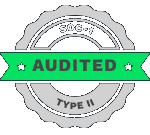What’s the very first thing that comes to your mind on hearing the word ‘SaaS’? Chaos – this would be what most CXOs would reply. This response is quite natural considering the SaaS Sprawl, which is a growing concern, majorly among the IT leaders.
How bad can it really be, right?
Chaos, if left unchecked, can wreak damage to the business in the form of unmanaged financial, operational, and security risks, along with fall in ROI generation.
Although SaaS (Software as a Service) applications promise to upgrade business outcomes & productivity, the unchecked rise in SaaS subscription management tools puts a heavy burden on budgets, resulting in compromised security and complex compliance.
Table of Contents:
This chaos is a result of the digital transformation which came into picture during the pandemic. It fundamentally transformed how organizations started acquiring and deploying applications.
What initially began as a required shift for assisting remote work has now become an intricate web of SaaS applications that started spreading throughout various departments as well as individual users. This phenomenon is referred to as SaaS Sprawl.
The Rising Challenge of SaaS Sprawl
Before learning about the rising challenges, we need to know a bit more about SaaS Sprawl. As already mentioned above, SaaS Sprawl is the unhindered spread of software as a service application within any given organization. As a result, this led to a complex ecosystem of similar applications, scattered data, and duplicate functionalities.
SaaS applications are different from traditional applications. Unlike traditional applications that need approval & installation support from the IT team, SaaS applications can be purchased & deployed urgently using a credit card & email address.
Let’s look at more detailed look at the challenges:
Security concerns: Increased attack, data breaches, and compliance issues are some of the most vital security concerns in SaaS Sprawl. SaaS applications that are adopted without approval from IT, there is an expansion in the scope of an organization being attacked in the form of data breaches and cyber-attacks.
Financial waste: SaaS Sprawl usually results in duplicated SaaS subscription management and similar tools in use. This results in waste of resources and loss of ROI, leading to overall saas software cost increases drastically.
Operational inadequacies: SaaS Sprawl leads to different systems which might be difficult to incorporate, thus obstructing data sharing & coordination. Isolated applications create data silos, restricting the ability to make quick decisions. This hampers team coordination, causing a drastic fall in productivity.
Reality Check: What might feel like a mere $15 per month subscription can quickly transform into a six-figure annual cost when multiplied across tools, teams, and regions.
Financial & Operational Impact
With the fast growth and expansion of software as a service, organizations are spending more on acquisitions of software subscriptions.
According to a report from Gartner, the expenses per employee for SaaS are somewhere around $1370 per year. This increase amounts to around an additional $500 per employee every year.
This adds to the overall expenses bored by organizations for its employees. However, the sad part is that a significant chunk (up to 25% of licenses) go unused.
These unused licenses become an unwanted burden rather than an asset.
This causes chain reaction in the form of fragmented data leading to further expenses which both IT & finance teams might find difficult to track.
Introduction to SaaS Management Platforms
As organizations grow, the intricacy of their respective SaaS environment grows with them. Multiple teams purchase tools independently, their respective renewals bypass through unnoticed, resulting in piling of unused licenses. This is where the various SaaS Management Platforms or SMPs come into light.
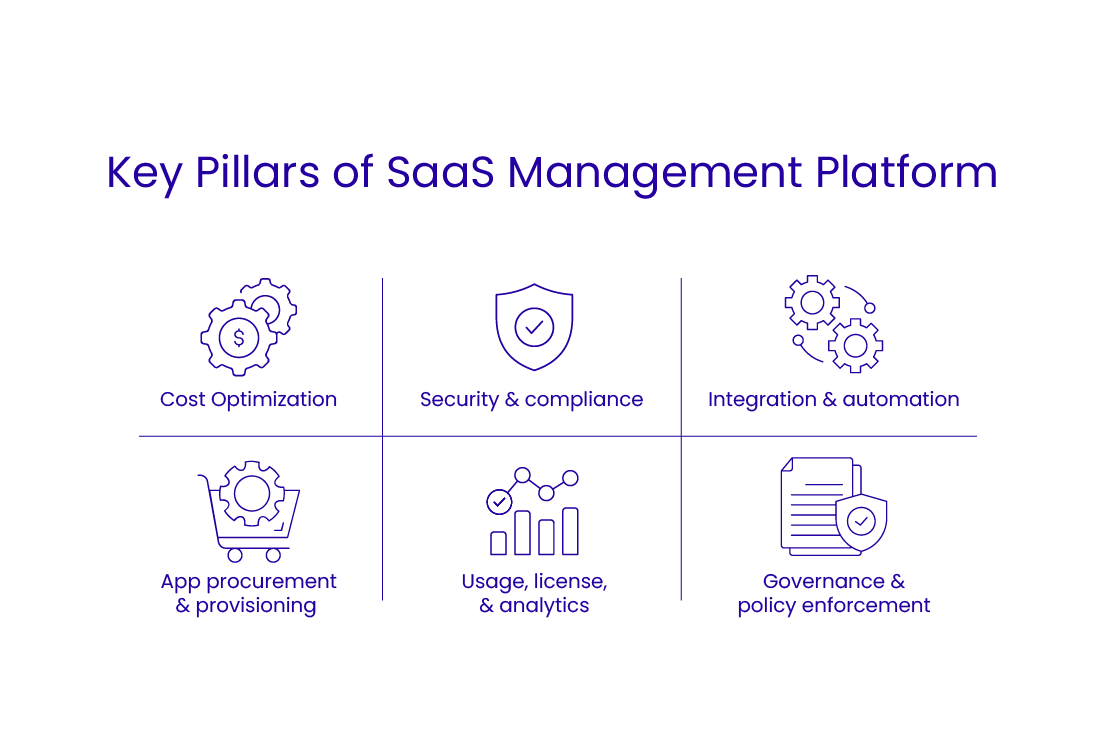
An SMP acts as your command center for all SaaS applications. It provides:
A single dashboard to track every SaaS subscription, vendor, and contract.
Functionality to see who’s using each saas tool and identify unused or underused seats.
Analysis of costs, detection of overlaps between tools, and highlighting of potential savings.
Simplifying onboarding, offboarding, and renewals to decrease manual admin work.
Ensuring apps meet your governance policies and data privacy requirements.
It has been observed that companies adopting SMPs report 25% cost savings and 35% faster decision-making.
When incorporated effectively, a SaaS spend management Platform is not just your simple cost-saving tool. It is a strategic enabler designed for agility, compliance, and operational efficiency.
Why Centralization, Integration & Optimization Matter
In many organizations, SaaS tool or saas platform is scattered across departments like a collection of small islands — each operating independently, often with little coordination. This fragmented approach leads to blind spots, wasted spending, and heightened security risks.
The solution lies in three key principles: centralization, integration, and optimization.
Centralization: A centralized saas software inventory brings all applications, contracts, and usage data into a single dashboard. This visibility is critical for highlighting redundant tools, monitoring renewals & compliance deadlines, and removing shadow IT.
Integration: By the proper integration of the SaaS management platform with various departments, it facilitates efficient data flow on a real-time basis. This benefits efficient automation of the onboarding/offboarding process, reallocation of licenses on an immediate basis, and combined financial reporting.
Optimization: For the correct restructuring of the software as a service ecosystem in accordance with the actual usage and business urgencies, you need to remove any unused license, negotiate a better pricing package with the SaaS vendors, and use fewer tools that offer similar as well as any additional feature.
Steps to Build a Lean SaaS Management Ecosystem
A lean SaaS ecosystem is not just about cutting costs — it’s about ensuring every tool actively contributes to business goals.
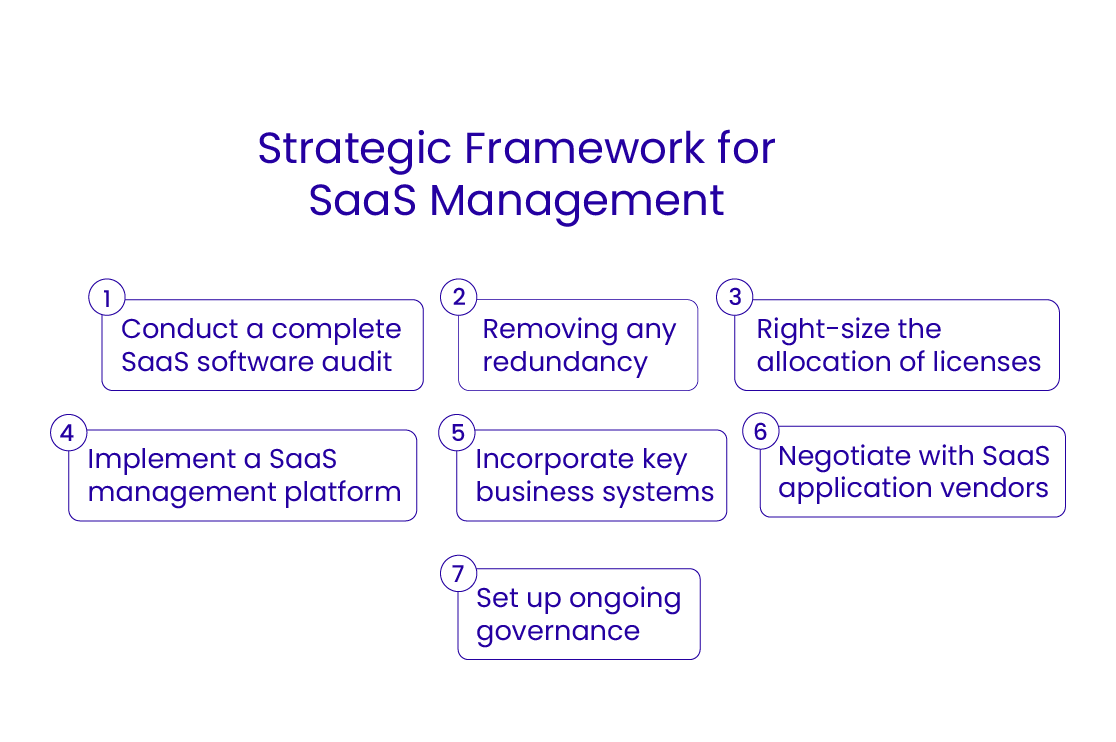
Here’s a step-by-step approach:
Conduct a complete saas software audit: This should comprise of a list of all active applications, users, contracts, and renewal dates. This will help in identifying any unused or rarely used SaaS applications.
Removing any redundancy: Try to recognize tools that are overlapping in terms of their features & functionalities. Also, try to consolidate platforms that are most effective and widely utilized.
Rightsizing allocation of licenses: Get rid of any license that’s inactive. Assign the unused or less utilized licenses to teams/departments/members that need them the most.
Implement a SaaS Management Platform: Consolidate the monitoring, contract management, and expense evaluation as well as for automation of onboarding/offboarding and renewals.
Incorporate key business systems: Connect the SMP with HR, finance, and identity systems for real-time updates.
Negotiate with the SaaS application vendors: Be proactive in discussing with the SaaS application vendors for better pricing or terms of the used applications.
Setting ongoing governance: Establish concrete policies for all the new purchases for SaaS applications. Also, evaluate the usage of the existing applications and their expenses for maintaining efficiency.
By following these steps, businesses can cut waste, improve productivity, and strengthen security — transforming SaaS from an unmanaged sprawl into a strategic, high-value ecosystem.
Recommended Reading:
Conclusion
SaaS sprawl is no longer a background IT headache. It has transformed into a strategic challenge that greatly impacts financial health, operational efficiency, and security.
The shift to remote and hybrid works accelerated software as a service adoption, but without governance, the result has been overlapping tools, underutilized licenses, and fragmented data.
By embracing centralization, integration, and optimization through a robust SaaS Management Platform, organizations can regain control, cut unnecessary costs, and improve agility.
Managing SaaS effectively isn’t just about savings — it’s about empowering teams, protecting data, and making smarter decisions in real time.
CXO Takeaway
You can’t control what you can’t see. SaaS visibility is your first defense against waste and risk. Every underused license is lost ROI. Optimize or eliminate to protect margins. The sooner you take control of your software as a service stack; the sooner you turn chaos into competitive advantage.
Remember that only with the correct SaaS management services, CXOs can prevent complete chaos from occurring in their businesses. Companies like BluEnt have the required SaaS experience & relevant expertise which can aid you in achieving the ideal harmony among your SaaS applications and their execution strategies.
FAQs
What is SaaS sprawl and why is it a problem?SaaS sprawl occurs when multiple cloud-based applications are adopted across an organization without centralized oversight, leading to duplicate tools, unused licenses, and escalating costs.
How does SaaS sprawl impact business finances?It results in wasted spending from overlapping subscriptions, underutilized licenses, and uncontrolled renewals — often costing companies thousands to millions annually.
What is a SaaS Management Platform (SMP)?An SMP is a centralized tool that tracks, manages, and optimizes all SaaS applications in use, helping organizations control costs, improve security, and streamline operations.
Why are centralization and integration critical in SaaS management?Centralization gives visibility over all tools, while integration connects usage and spend data, enabling informed decision-making and faster optimization.
How can companies build a leaner SaaS ecosystem?By auditing existing tools, eliminating redundancies, negotiating better contracts, tracking usage, and implementing an SMP for ongoing governance.
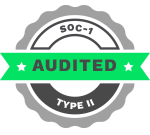










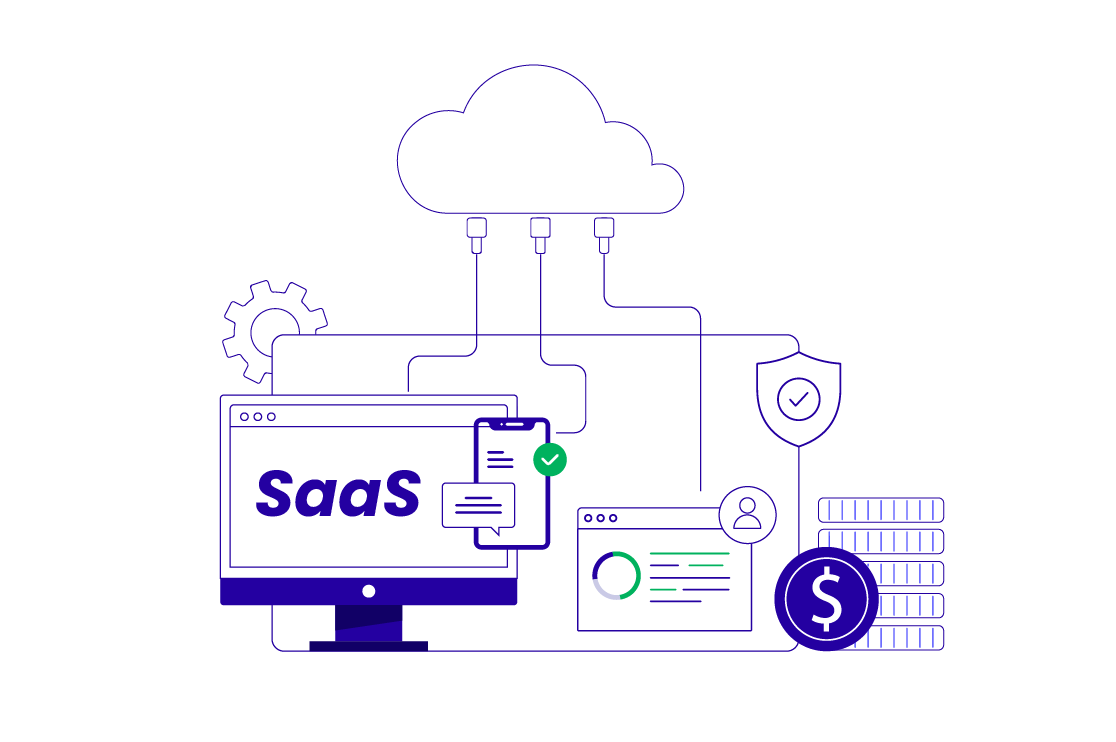
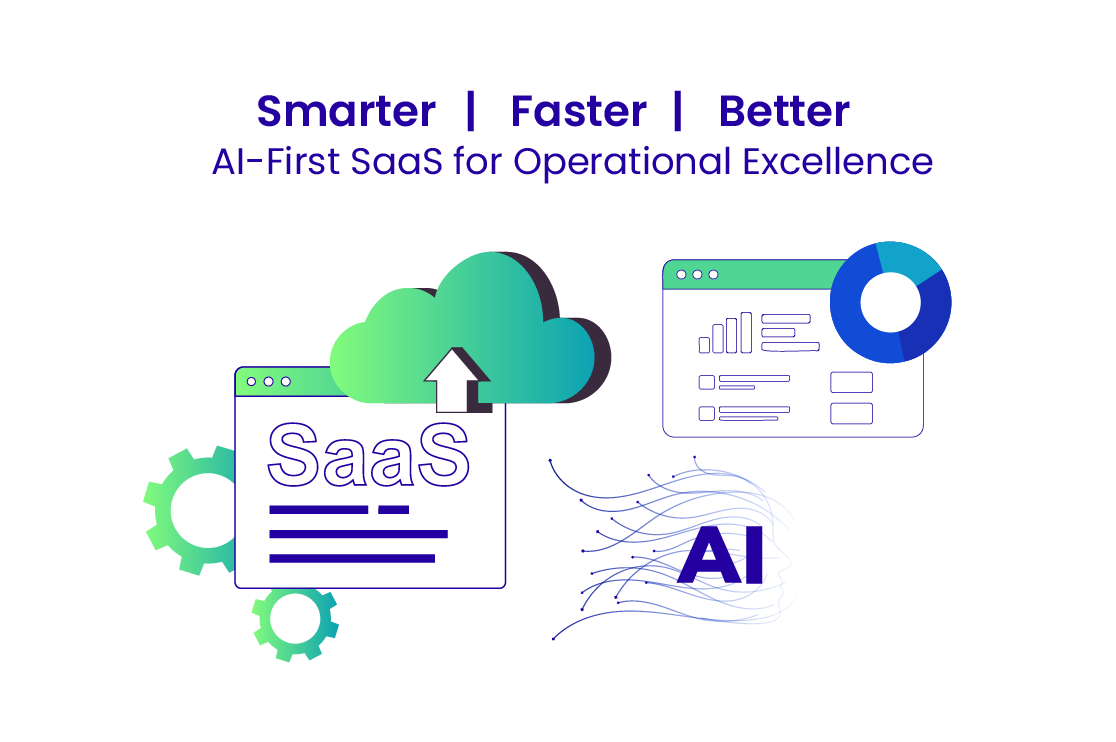 AI SaaS Solutions for Operational Excellence and Business Efficiency
AI SaaS Solutions for Operational Excellence and Business Efficiency 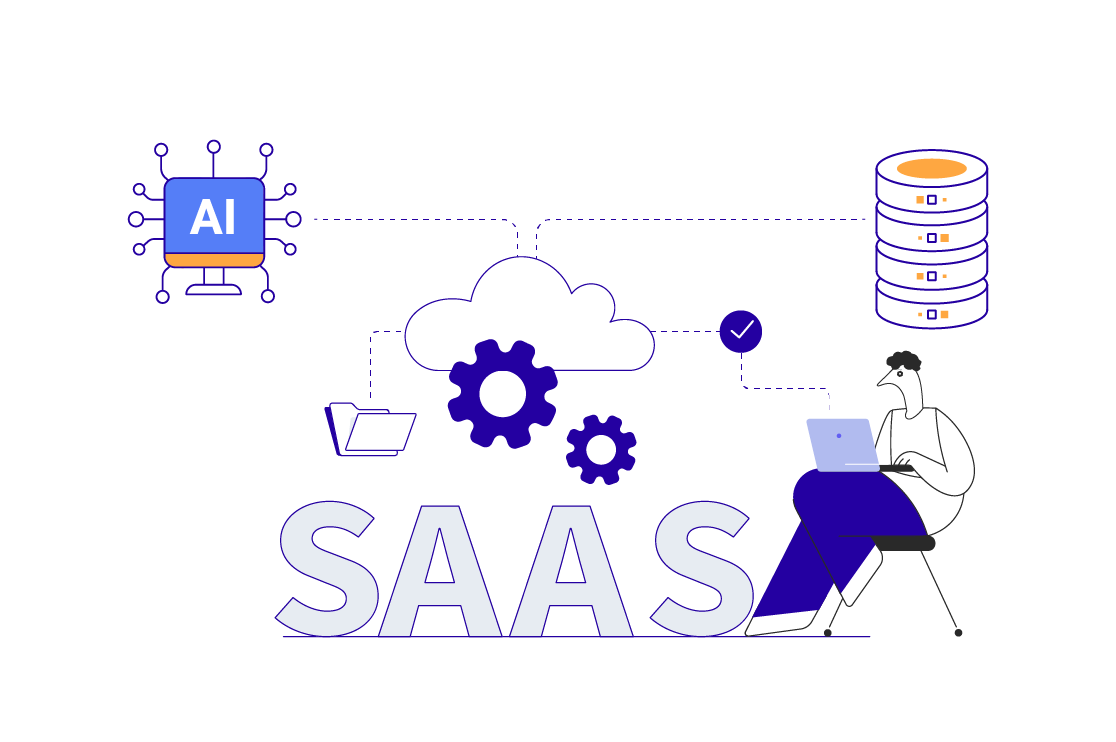 AI SaaS RAG Workflows: Smarter Knowledge Retrieval for CXOs
AI SaaS RAG Workflows: Smarter Knowledge Retrieval for CXOs 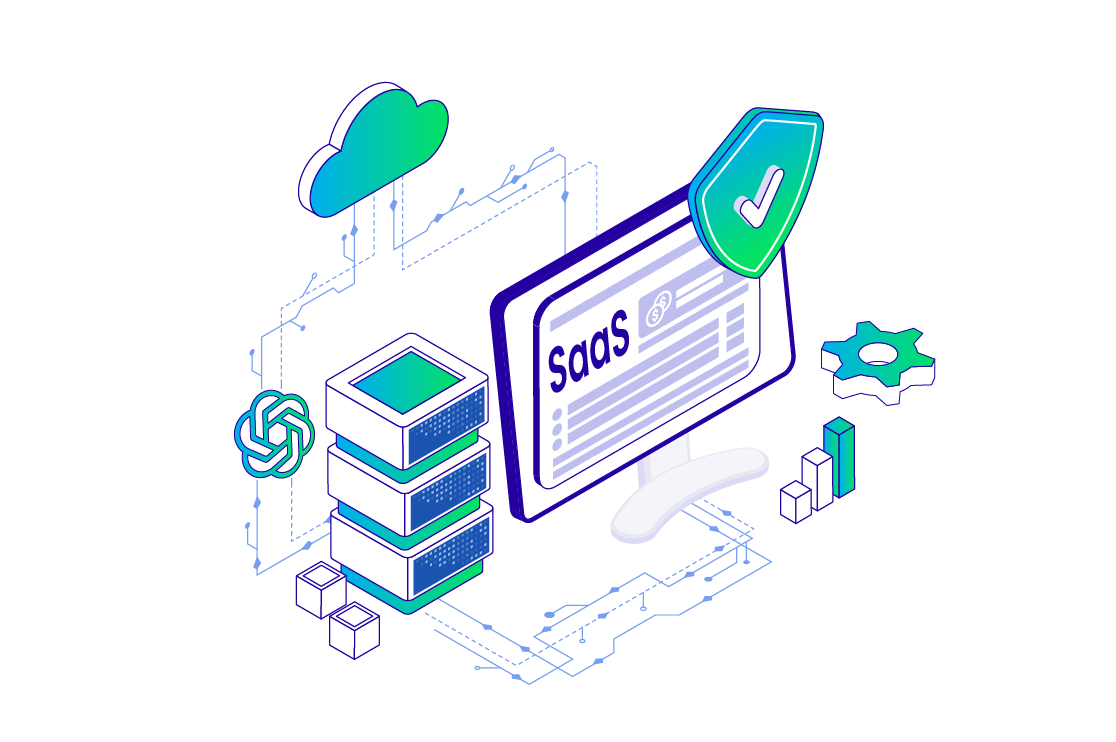 OpenAI SaaS integration – A Quick Guide for CXOs
OpenAI SaaS integration – A Quick Guide for CXOs 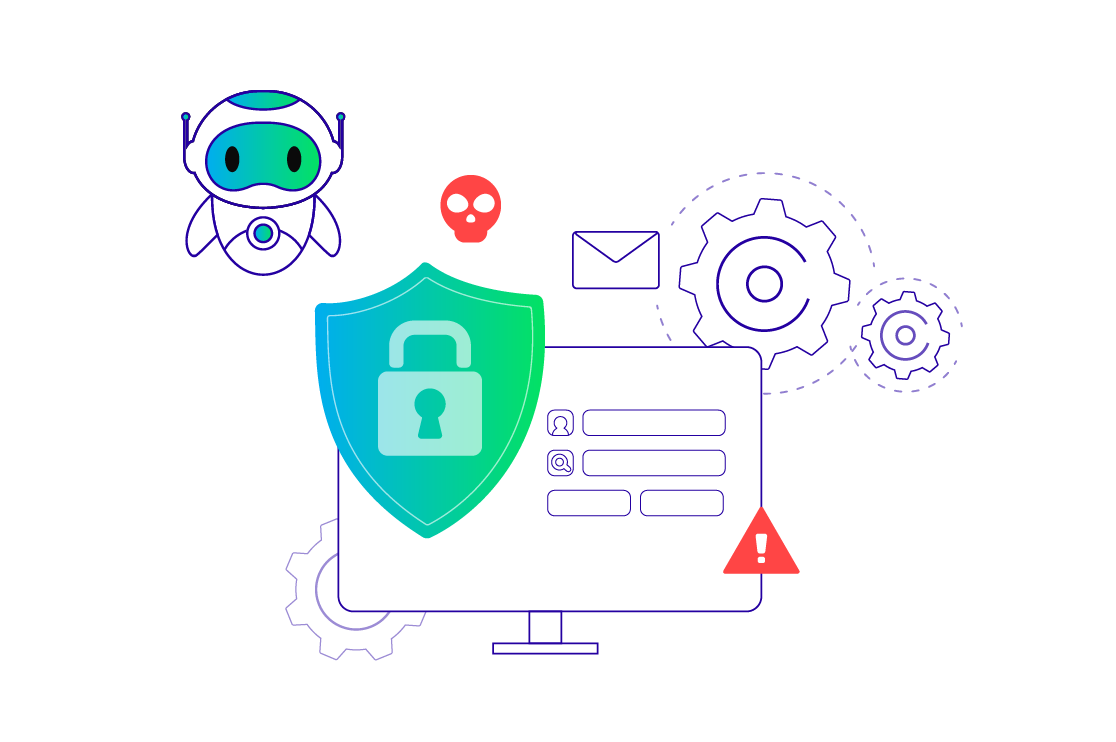 SaaS Security 2025: How to Stay Ahead of AI-Powered Threats
SaaS Security 2025: How to Stay Ahead of AI-Powered Threats 
